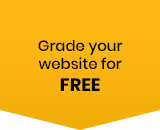Using Images for Your Website and SEO Score
)
A picture paints 1000 words. Then it helps rank them on Google search results.
It’s a fact that Google priorities website pages that use images over those that don’t. And apart from being nicer to look at, blogs and pages that use images:
are more likely to rank higher on Google
have more opportunities to be featured in search results with rich results
have better capabilities in linking with social media
improves your website content readability
But, how should you be using images on your website to help with your SEO efforts?
Images and SEO Commonly asked questions:
Do images affect website SEO?
Yes, images on blogs, content pages, social media, and ads all affect your search engine rankings (SEO).
How does using pictures positively affect SEO and keyword rankings?
Even though images don’t have readable words that Google’s crawl bots can understand, Google still reads things like the image title, filename and alternative text to help comprehend the content.
As well as that, Google uses its own software like Google Lens to relate the image to similar pictures from different websites to understand what’s in the picture.
Will using more images help rank my website and keywords higher?
While using images does positively affect your SEO, using too many can make your content hard to understand and can have a negative impact on your website traffic. Typically, it’s best to use only one image per sub-heading or for every few.
What format should images be on websites to help with SEO?
While any image format that your content management system uses works on Google, typically it’s best to use WebP because it looks better and is supported by more browser types (like Chrome and Firefox).
SEO and images: 5 ways to optimise your website pages
1. Check how it looks on mobile devices
More than half of all web searches are completed on mobile devices and that amount is continually growing with the rise of trends like voice search, which also affects your SEO ranking on your website.
Google rates mobile usability highly and will be more likely to rank your website higher on search results if it’s optimised for mobile users. So, when you add your images, make sure you double-check what the page looks like on mobile devices.
Below is an example of a web page that’s optimised for both desktop and mobile using the Bloomtools website page builder:
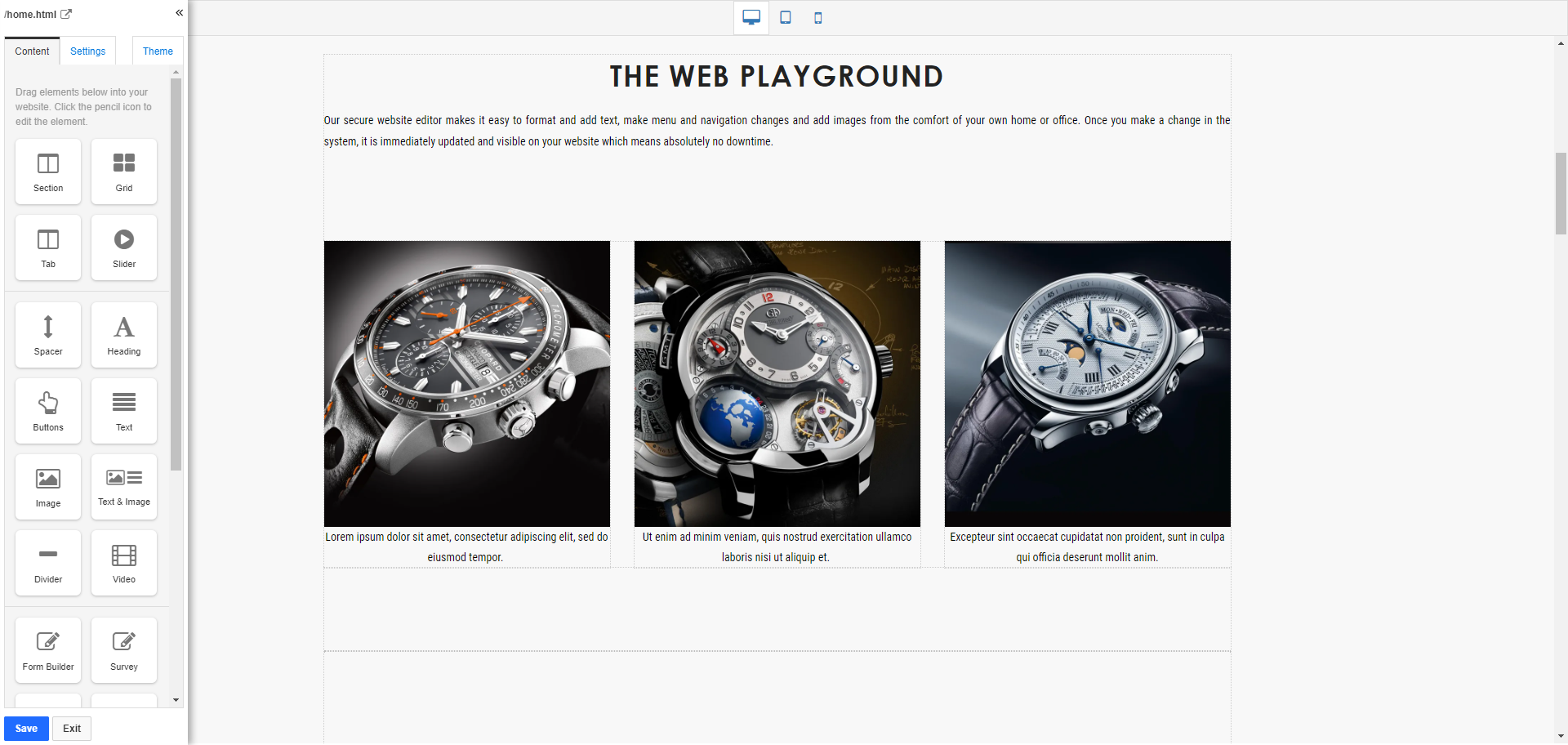
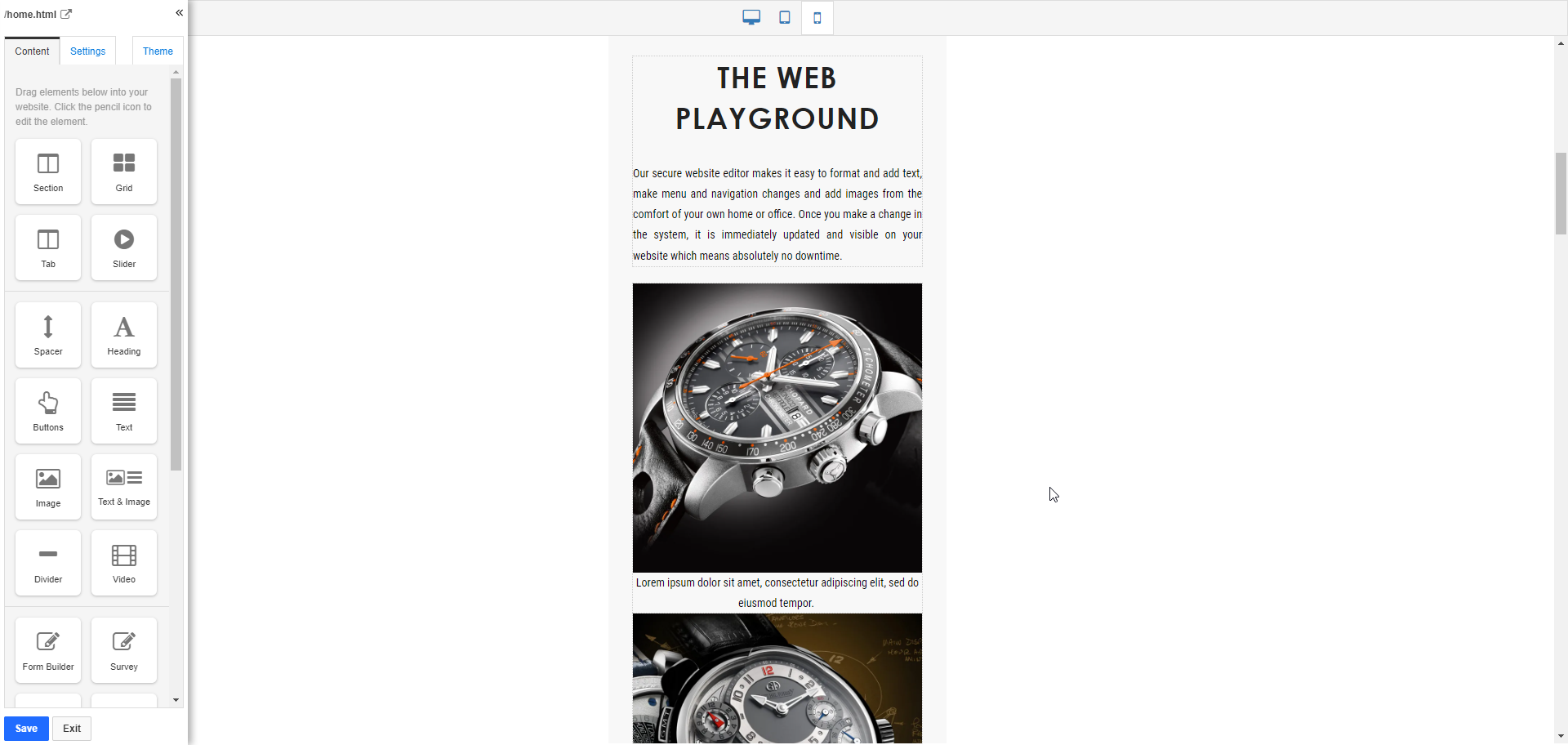
2. Compress the images
While high-resolution images look fantastic, they also take a long time to load.
As you might know, long load times mean low SEO and search engine rankings for your website. And, in the website design industry, images are actively making as much as 20-30% of a page’s weight (a big chunk of your page’s loading time).
But, you don’t necessarily need to use fewer images, you can compress your images and keep plenty of great pictures on your website.
Some tools to do that include:
Not sure about your current page speeds or image file sizes on your website? Grade your website and pages using the Bloomtools Free Website Grader to find out.
What size should images be?
Depending on your image hosting/web page host, image sizes for website pages should typically be between 1500 to 2500 pixels wide, with a file size less than 200KB.
Which image file type loads fastest?
Static images will always load faster than dynamic, which means that GIFs are going to be the slowest to load. Comparatively, PNG, JPG, and WebP will load a lot faster with WebP usually coming out on top.
3. Avoid common stock images
There is a time and place for stock images, and most website pages are full of them. That’s because they’re cheap (often free) and effective.
But, if you consider the last time you looked at a real estate or corporate website, how likely were you to see generic images of people in suits shaking hands in glass-walled offices?
The more unique your image, the more chance your image and website will:
be more eye-catching
have a better chance of ranking higher on search engines
display different services and products you offer more accurately
Also, as a small business, it’s often better to appeal to your target audience by using your own images (supplying photos is also great for local SEO).
4. Change your image file names
Google doesn’t only use Lens to determine what your image pictures. It also uses your picture’s file name.
Typically, as you save pictures or import them from a device, they will have file names like “IMG_1272022”. Quickly changing that before you import your website will have a positive effect on search engine rankings for keywords and for products in your online store as Google reads it as it scans the picture.
Because of that, file names for images should be descriptive of what’s included in the picture instead of keyword stuffy.
For example, if you sold watches, you wouldn’t name your file something like “Best and cheapest watch”, you would name it more along the lines of what your audience would be searching for, like:
“Black leather band watch”
“Locally made watch”
“Men’s watch with date”
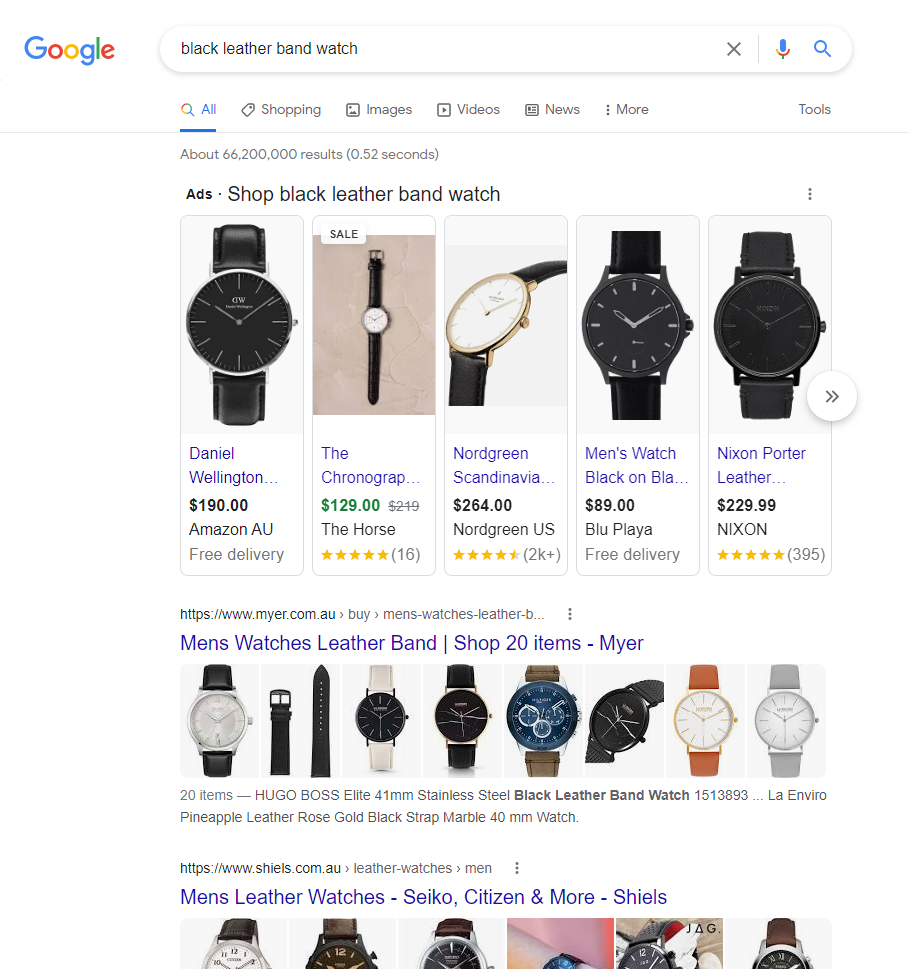
5. Give your image alternative text/alt-text
After giving your image a file name, you have another opportunity to use your image to benefit your SEO score when you give it an alternative text.
The alt-text should be named similarly to the file name, though there’s an opportunity to make it slightly different to reach more keyword opportunities.
As well as boosting your SEO efforts, the alt-text is in place for a good reason. The WCAG set guidelines for websites to follow worldwide to make them more accessible to everyone. So, if someone were visually impaired, your alt-text can be read aloud to describe the picture.
So, say you sold watches, here are some alt-text examples:
“Black leather watch”
“Watch with the date on it”
“Three-hand watch”
“Watch with timer”
“Fabric band watch”
See below for an example of renaming your alt-text in a website page builder:
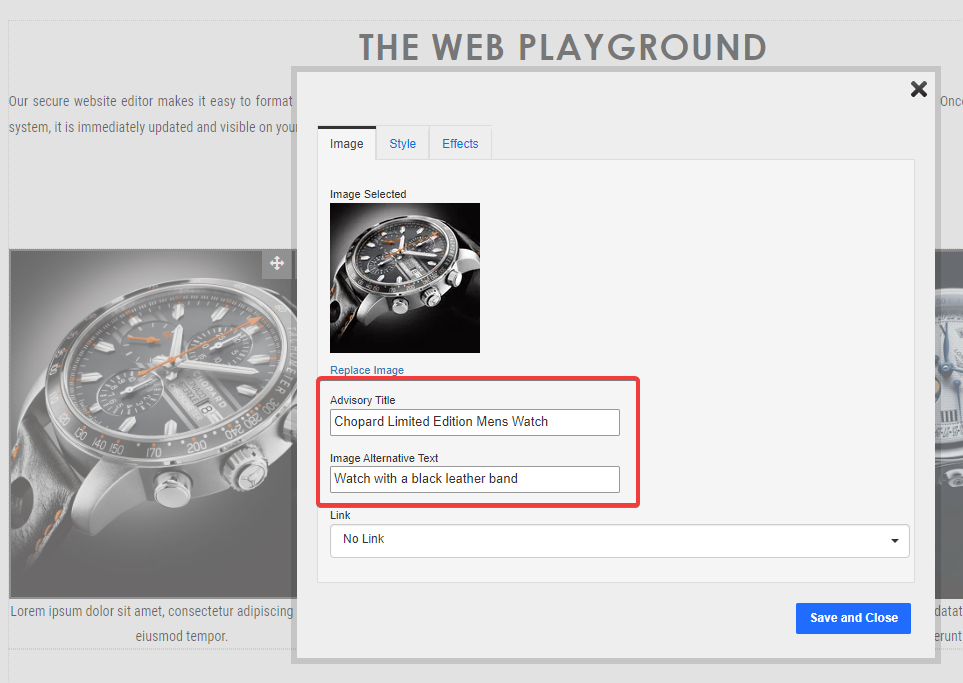
For more website SEO tips & local SEO and digital marketing
There is a heap of slightly more advanced image tips that will help your SEO including:
Improving your on-page SEO elements (metadata, structured data)
Adding images to your sitemap
Creating an image sitemap
Adding structured data
For tips to improve these and more of your website, check out the Bloomtools blog which is full of SEO and website design tips.
And to grade your website pages and images, use the Bloomtools Free Website Grader. And for a completely free consultation on your website and current digital strategy, contact us.
Our Gold Coast Head Office is open Mondays to Fridays from 9 am to 5 pm and is available by phone at (07) 5636 3700.
| Tags:Internet MarketingSearch Engine Optimisation |
Check Out Our
Recent Articles
- Maximizing your Google Visibility: How to Choose the Right Google Busine...
- Why Put Energy Into Onboarding New Clients?
- Mastering Blog Success: A Comprehensive Guide to Crafting, Promoting, an...
- Unlocking the Power of Google Reviews - Without a Google email address
- Unlocking the Power of Trigger Emails: A Small Business Guide to Skyrock...

